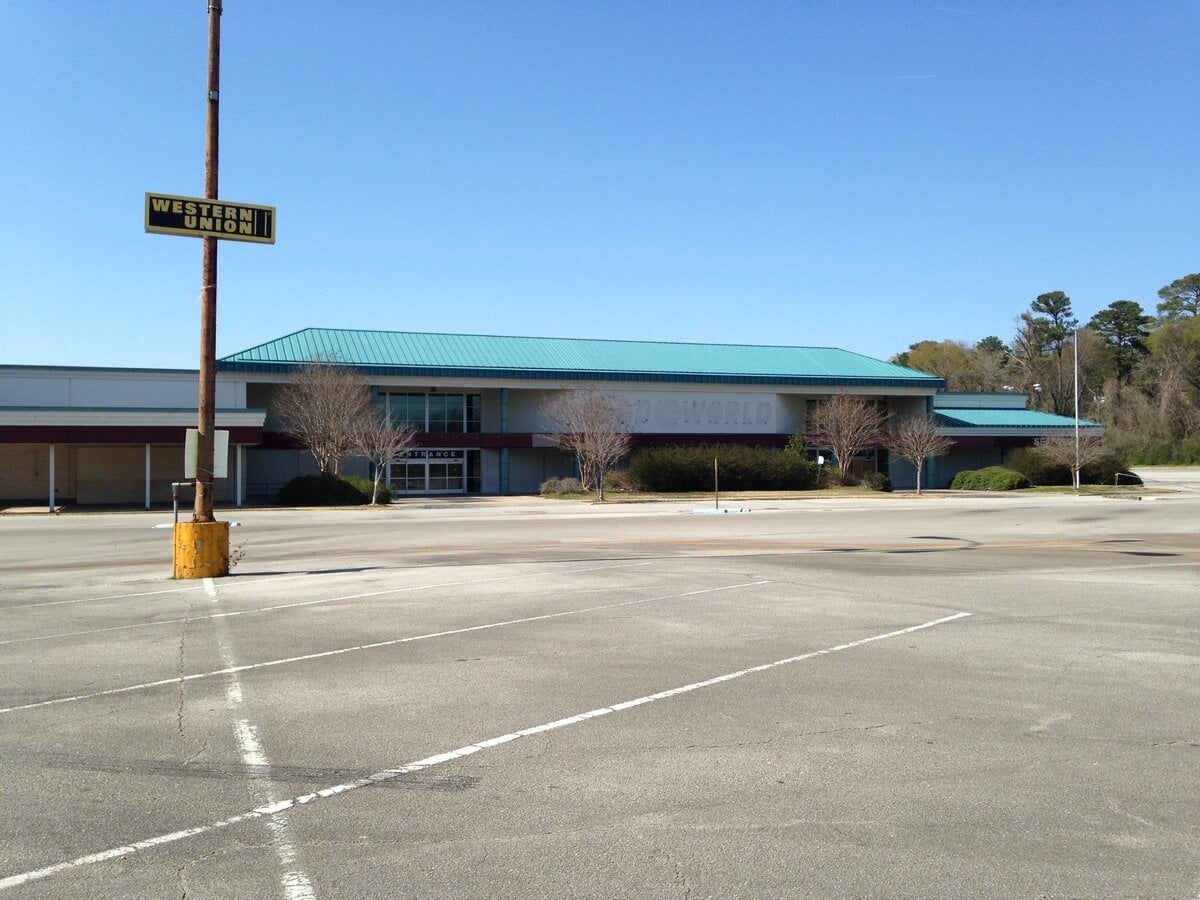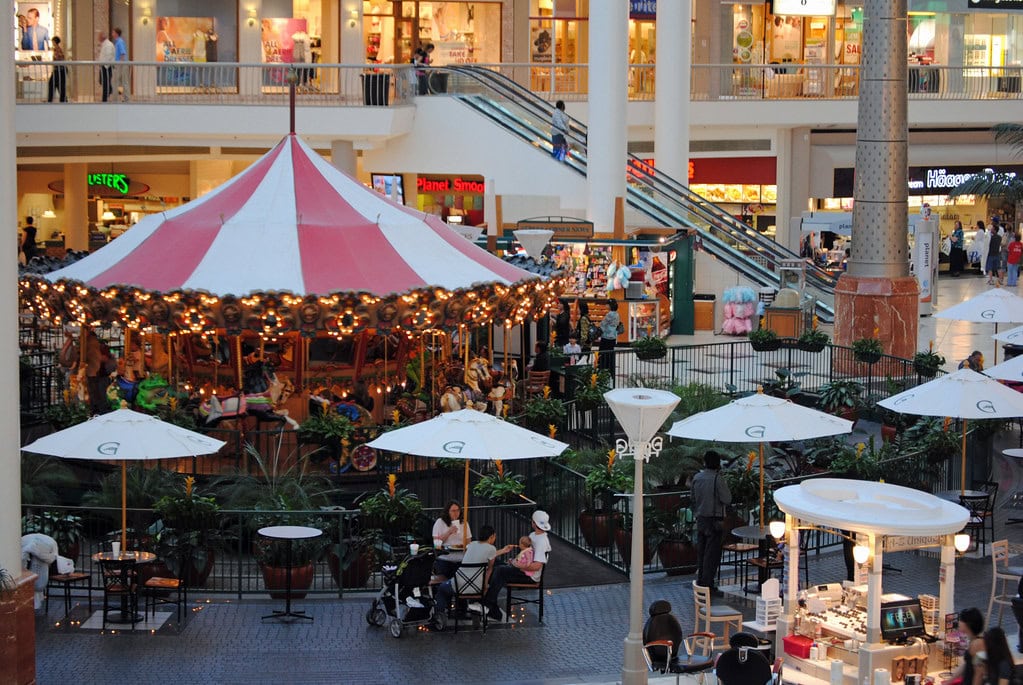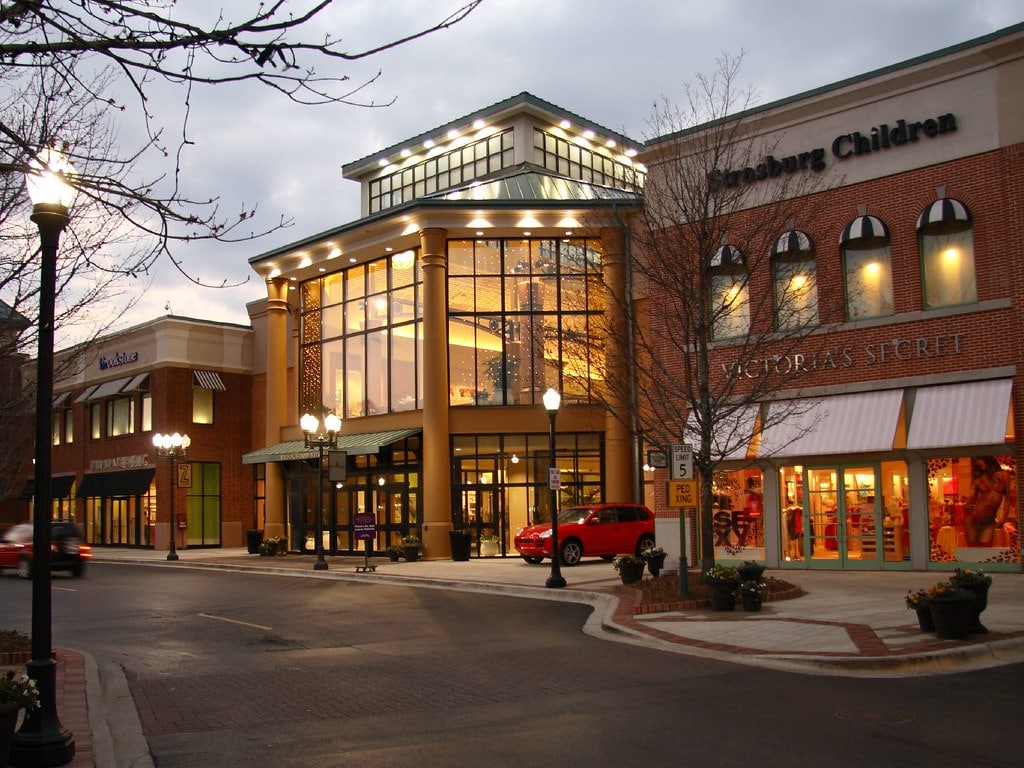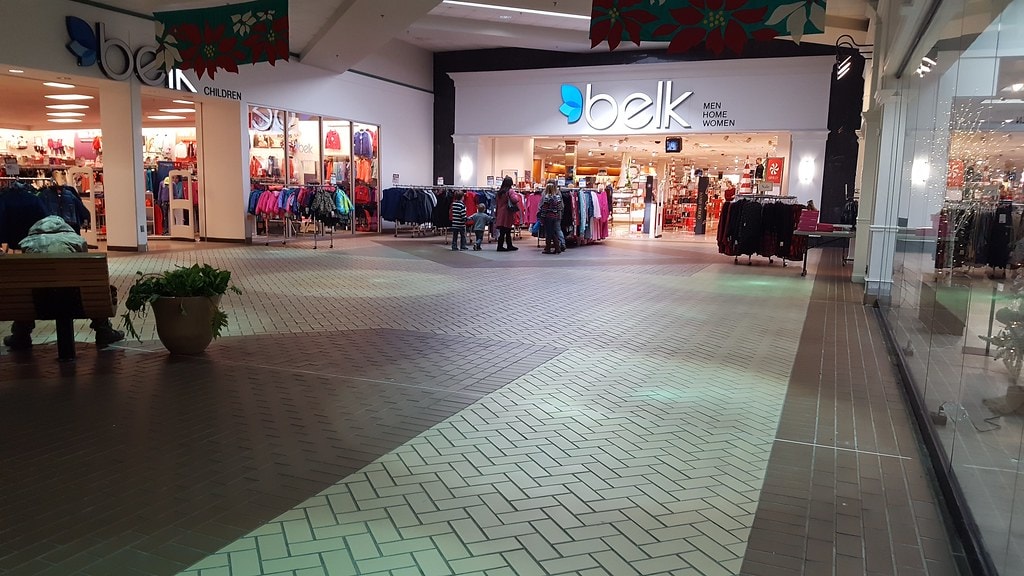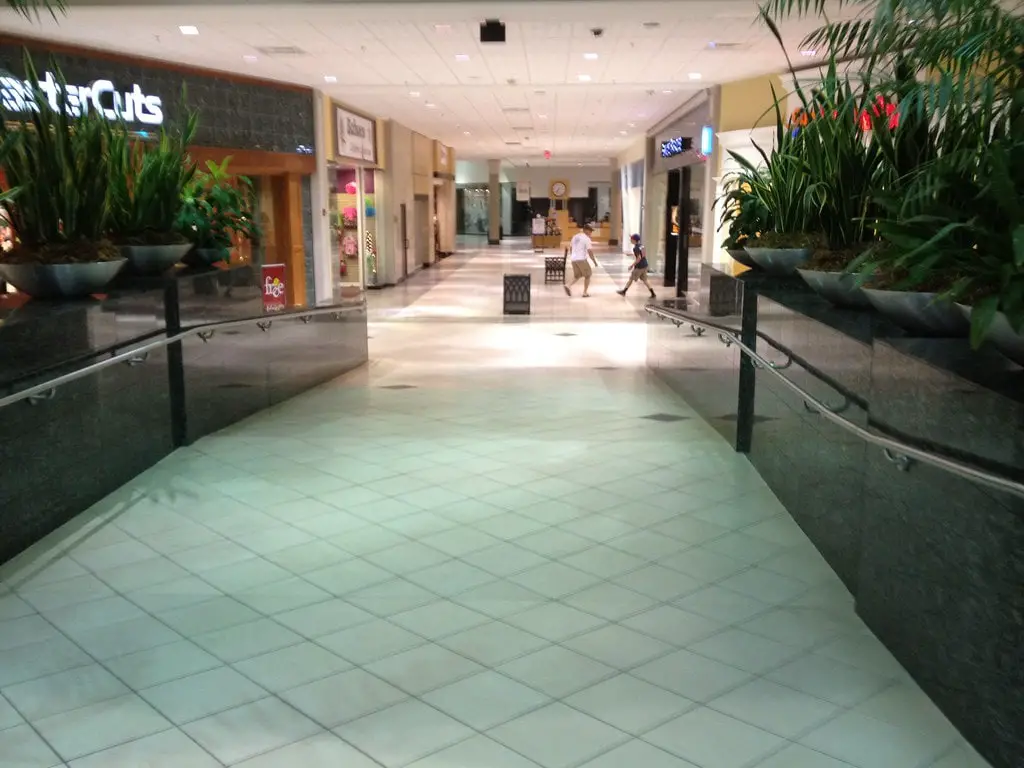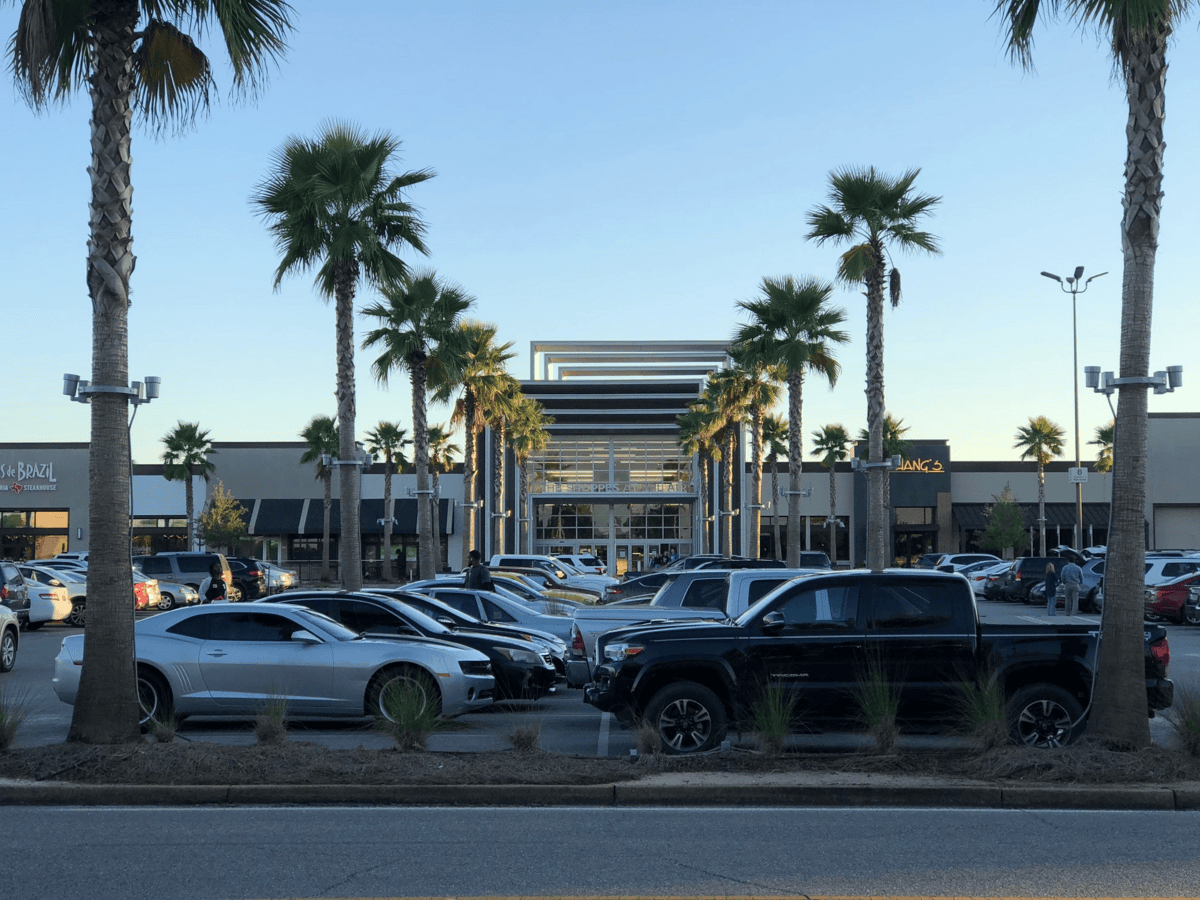Commercial Blueprint - The Early Market Strategy Behind Bel Air Mall
When Bel Air Mall opened in August 1967, it did so after more than a decade of planning and land strategy.
Developers Kenneth R. Giddens, William Lyon, and Jay Altmayer worked with Herbert H. Johnson Associates, a firm based in Washington, D.C., to design a retail corridor that fit Mobile's growing west side.
The structure stretched 900 feet and was home to 50 in-line tenants. Sears and Hammel's, a local department store, anchored the layout.
The developers planned it as the nucleus of what they saw as an edge city - a spread of automobile-driven commercial space beyond Mobile's core.
Surrounding the mall, movie theaters, strip plazas, office parks, and apartments began filling in.
They named it Bel Air, drawing from its position at the intersection of Beltline Highway and Airport Boulevard.
Nine Grecian statues - originally cast in the 1850s on orders from Napoleon III - stood inside the mall, imported from their previous location at Versailles.
By 1973, Hammel's had been absorbed into D. H. Holmes, a New Orleans chain.
That rebrand brought a second floor and a build-out to 200,000 sq ft.
It became the chain's Gulf Coast hub. The next year, Bel Air added a north-south corridor anchored by a new 191,000 sq ft JCPenney.
This brought the total size of the mall to over a million leasable square feet.
The expansion also gave Bel Air Mall a new distinction: it became the largest enclosed retail center in Alabama at the time.
With its proximity to I-65 and steady foot traffic from the Airport Boulevard corridor, Bel Air Mall defined the retail pattern that would hold across Mobile County for the decades ahead.
It was the central draw for shoppers looking for things to do in Mobile, Alabama.
Anchor Deals and Market Reshuffles - Bel Air Mall's Retail Playbook
The next anchor switch came in 1984. Parisian arrived with a 90,000-square-foot footprint on the eastern edge of the property.
The design leaned modern. White brick facades, French Colonial details, and a new food court with sunken seating and water features marked the update.
One of the exterior entrances had a two-story structure, but the second level never opened to the public.
It became something of a curiosity - visible, built, and empty.
As more department stores moved in, the mall's expansion matched their scale.
In less than ten years, Bel Air Mall went from a one-corridor setup to a full triangle, linking Sears, D. H. Holmes, JCPenney, and Parisian in a walkable circuit.
The additions also brought national brands to what had started as a local or regional lineup.
Mobile's spending pattern began to center around this commercial hub.
In 1989, the D. H. Holmes location changed hands again - this time to Dillard's.
The Arkansas-based company had been looking to extend its reach into South Alabama.
Acquiring Holmes gave it a move-in-ready space in a top retail location without the need for new construction.
And just like that, Dillard's entered the Mobile market by stepping into a space built more than a decade earlier for a competitor.
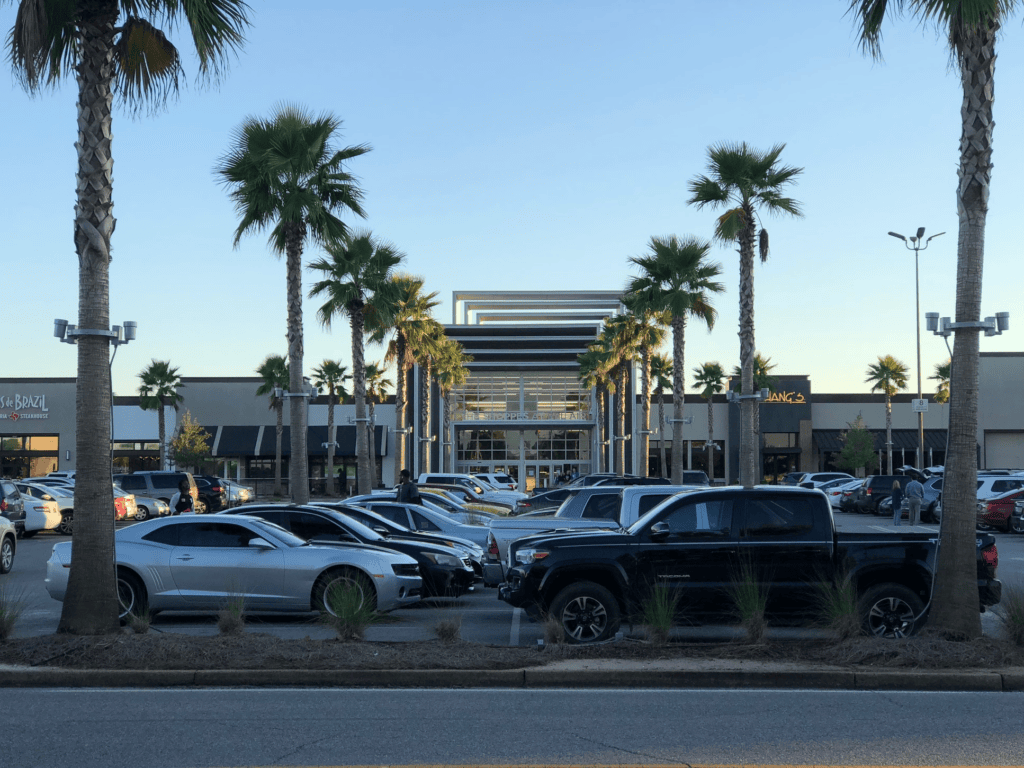
Expansion Capital - The Late 1990s Push for Retail Scale
The 1990s opened with cosmetic work and rebranding, but the larger investments came later.
In 1996, Target announced it would build its first South Alabama location at Bel Air Mall.
That decision turned into a retail catalyst. A $40 million capital improvement plan followed, spread across multiple anchors.
Target's footprint alone - 116,000 square feet - required demolition of the food court and nearby shops, including Bailey Banks & Biddle.
Other department stores joined in. Sears expanded upward, adding 70,000 square feet on a second level and 20,000 more on the ground.
It also got a modern exterior. Parisian extended to 122,000 square feet by taking over a corridor that had once connected it to the central food area.
Dillard's updated both its facade and interior. JCPenney, while not expanding its floor plan, did make changes throughout the store.
This wave of construction capped a strategy that hinged on keeping anchor tenants competitive with newer suburban malls.
Bel Air didn't have the space or parking layout of Riverchase Galleria in Birmingham, but the investment allowed it to keep pace with current retail expectations.
The ownership also changed.
In 1998, Colonial Properties Trust acquired the mall and operated under that name until 2000, when it rebranded the site as Colonial Mall Bel Air.
Around the same time, the original Parisian location added some exterior signage changes but retained its design.
By this point, Bel Air Mall had four major anchors and national chains in its in-line mix and one of the highest square-foot totals for any enclosed shopping space in the state.
Its floor plan - triangular and heavy on square footage - reflected the shopping preferences of Mobile's retail economy in the late 1990s.
Tenant Refresh and Branding Overhaul - Bel Air's 2000s Retail Reset
Colonial Mall Bel Air's name would only last until 2007. After nearly a decade under the Colonial banner, the property reverted to its earlier name - Bel Air Mall.
It was a quiet shift, but it coincided with a broader adjustment in branding across multiple shopping centers in the Colonial Properties Trust portfolio.
Anchor swaps continued. The Parisian space - originally added in 1984 - transitioned to Belk in September 2007.
That change followed a corporate deal in which Belk acquired 38 Parisian stores from Saks Incorporated in August 2006.
The layout of the former Parisian didn't change much, but the Belk signage replaced the older logo by the fall of that year.
Other parts of the mall also got reworked.
In November 2008, Forever 21 moved into the former Woolworth's footprint with a 26,000-square-foot XXI Forever location.
That space, near the food court, had previously hosted several niche retail concepts from Foot Locker.
None of them stuck for long, and Forever 21 became the most stable tenant in that corner.
Through the spring and summer of 2010, JCPenney saw its biggest in-store update in over a decade.
The retailer installed brighter flooring, new fixtures, and a loop-style racetrack layout on the main floor.
It also added a Sephora shop-in-shop - visible from the mall's central entry - which introduced national cosmetics branding without requiring new square footage.
Most of these changes weren't expansions - they were reuses of existing footprints.
However, that shift in strategy said more about the commercial moment.
By the late 2000s, new construction was slowing across U.S. malls.
Instead, owners and tenants turned inward, reworking their layouts and pushing national names to the front-facing corners of each property.
Real Estate Strategy and External Retail Build-Out - The 2015 Repositioning of Bel Air
In early 2015, Bel Air Mall management released plans for a large-scale renovation that would change how the shopping center interacted with Airport Boulevard.
A new entrance design - anchored by an exterior tower element - would improve visibility from the street and help transition the mall toward a more street-facing format.
It was part of a broader industry trend at the time: converting enclosed retail spaces into hybrid environments with dining, open-air paths, and front-loaded signage.
The design also restructured part of the surrounding pad sites.
Two national restaurant chains, P.F. Chang's and Grimaldi's Pizzeria, were developed just outside the new central entry.
That entry plaza received upgrades - native landscaping, benches, and water features - designed to slow down foot traffic and extend people's time spent near the property.
At the opposite end, the long-empty Bel Air Cinema parcel was cleared for surface parking.
This realignment wasn't just aesthetic. It changed the retail map around Bel Air.
The closed Books-A-Million building, which had gone dark on Christmas Eve 2013, was absorbed into the new footprint.
It offered extra space and added a secondary entrance on the smaller corridor near Target.
The rebrand came in July 2015. "The Shoppes at Bel Air" replaced the earlier name.
The update wasn't only for shoppers - it sent a message to retailers and brokers.
The property aimed to be part of the street-front leasing pattern that many regional centers had begun adopting.
Anchor changes followed soon after. Sears, one of the original tenants from 1967, closed in September 2015.
Belk took its place a year later, opening a 237,000 sq ft flagship store in late September 2016.
Retail brokers and site planners marked that handoff as a reset - anchoring the newer side of the building with an updated, larger-format tenant.
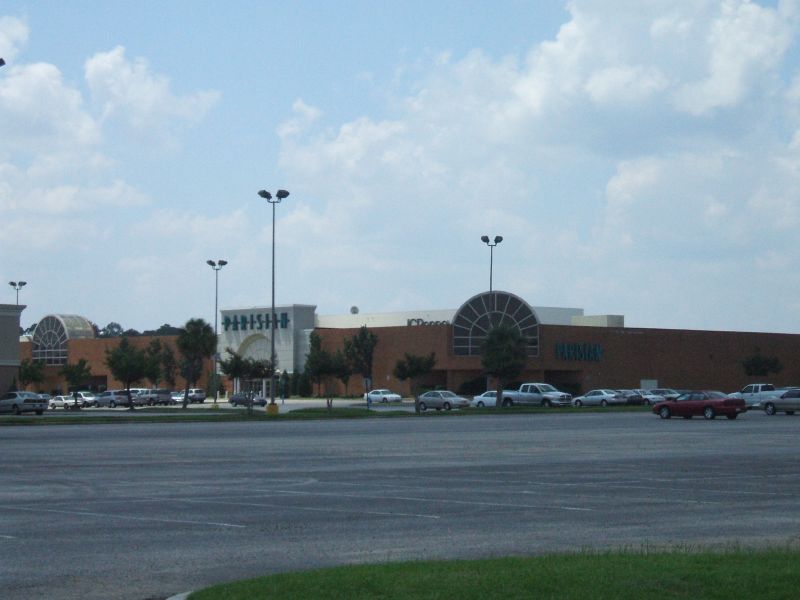
Property Transition and Entertainment Build-Out - Surge Fills the Anchor Gap
In February 2023, The Shoppes at Bel Air announced that Surge Entertainment Center would open its fourth U.S. location inside the former Parisian-Belk anchor store.
This decision repurposed the two-level footprint once used by softline retail into a mixed-activity entertainment layout - renovations extended beyond the anchor box.
The interior corridor connecting Target and JCPenney was also targeted for expansion, effectively dividing the footprint and changing mall traffic flow.
The new center opened to the public on June 15, 2023.
Surge built multiple attractions: bowling lanes, sports simulators, laser tag, arcade cabinets, a ninja-style obstacle course, and a mini-golf layout.
It also added a high ropes course and an XD Dark Ride theater.
Additional features, like go-karts and indoor pickleball, were set to be followed later.
Inside, the layout included a full-service restaurant and bar named Bistreaux.
The menu was designed to serve visitors who stayed longer than a single activity - especially families or group events.
Party packages and rental blocks were available for birthdays, corporate gatherings, and other private functions.
It was one of the few locations in the city offering entertainment, food, and structured events in a single leased space.
In early 2024, The Shoppes at Bel Air came under new ownership.
The site was acquired by 4th Dimension Properties, a group that manages commercial spaces, focusing on mixed-use retail and entertainment.
Their stated direction for the Mobile property involves combining dining, shopping, and leisure into a more connected layout - less traditional mall, more multipurpose venue.
JCPenney, which had operated in the mall since 1974, closed on September 22, 2024.
The closure was announced in June of that year. With that change, Target became physically separated from the rest of the mall's main flow.
The mall's west wing - once anchored by two department stores - now has one entertainment venue and one dark retail space.

